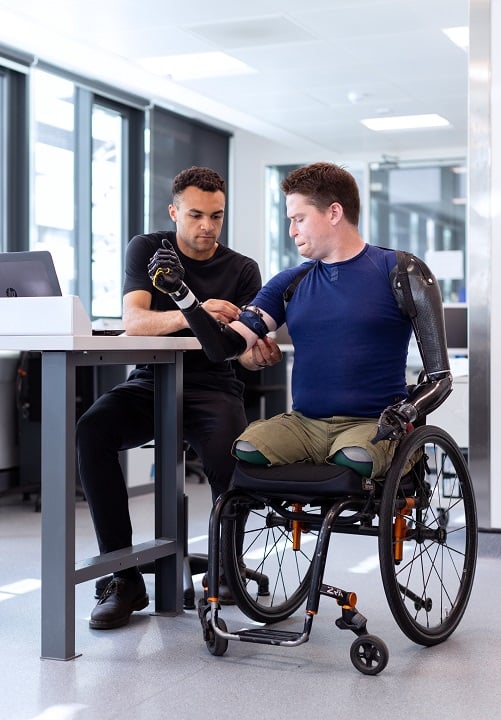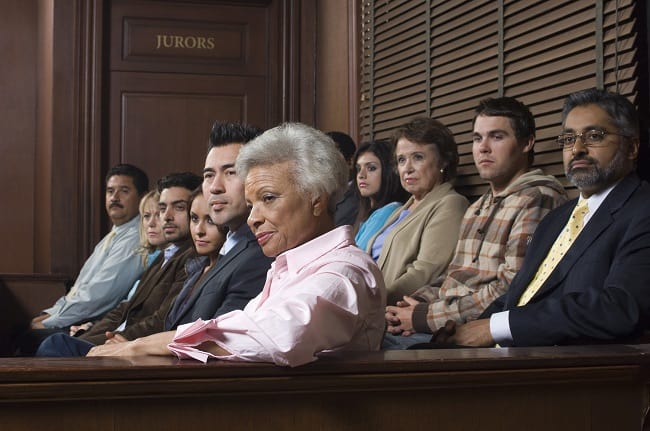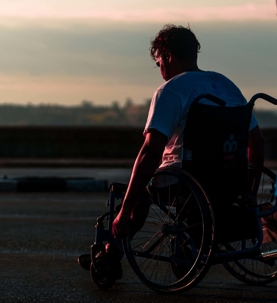In some personal injury cases, no one is at fault. In many others, however, some party is responsible, either by negligence or intention, giving rise to the possibility for restitution. Such accidents could arise at work, on the road, at home, or in any other place. At Crawford Law, we will have your best interests at heart throughout the injury lawsuit process. Our trial experience is what you need to leverage better compensation from the negligent parties and their insurers.
Does my injury case need to go to court?
 Very low proportions of personal injury cases end in court. Be that as it may, your attorneys need to approach the case as if it’s going to trial. That’s the only way they will make a claim that is persuasive and warrants actual substantial compensation, even if the case is settled out of court. At Crawford Law, we are well-versed in the injury lawsuit process and are willing to take the case to trial, if need be, to get you the best possible outcome for your damages.
Very low proportions of personal injury cases end in court. Be that as it may, your attorneys need to approach the case as if it’s going to trial. That’s the only way they will make a claim that is persuasive and warrants actual substantial compensation, even if the case is settled out of court. At Crawford Law, we are well-versed in the injury lawsuit process and are willing to take the case to trial, if need be, to get you the best possible outcome for your damages.
What will my lawsuit process be like?
The process is hostile – the defendant and their insurers will be out to prove that they are not responsible for your injuries or that they are only partly accountable. They may concede a willingness to pay a small sum in compensation. On the other hand, you and your attorney will be tasked with proving the depth of injuries you suffered. The need will be to prove how the accident was the defendant’s fault. You will have to show how pain and suffering have negatively impacted your life.
The injury lawsuit process is often lengthy and stressful—why is that?
For starters, because of its hostile nature, you may feel the brutal side of the defense as they try to disprove your arguments. They will go to great lengths to prove they didn’t cause the accident, or that your injuries don’t deserve the compensation amount you are asking.
Besides, this is a hard time for you, given the physical and emotional pain that you have suffered as a result of the injury. You and your family are also uncertain about the future. You may be staring at a lengthy list of medical bills.
How does my injury lawsuit start?

After the accident, the first step is to get medical treatment. Next is to choose a personal injury lawyer with courtroom experience, someone who will be able to take your case in the exact direction it needs to go to achieve justice. The attorney reviews your medical records and investigates your claim.
The claim is filed after you have completed your treatment and have made a maximum medical improvement. At that time, it is easy for the attorney to estimate the full extent of your damages in monetary terms.
What is the discovery process in my personal injury lawsuit?
The injury lawsuit process continues with what is called “discovery.” This is the stage in which your attorney and the defendant’s exchange information regarding facts of the case, evidence, and witnesses. The process helps all the parties in the lawsuit familiarize themselves with the details of the case. Discovery happens before settlement negotiations and before trial. The process involves:
- Interrogatories: These are written questions opposing counsels send to each other to gather facts such as name and contact information of the parties involved, witnesses, the scope of injuries and type of insurance coverage among others.
- Request for production: Your attorney requests for documents for inspection, including medical records, photos of the scene of the accident, insurance records, and others
- Request for admission: Your attorney can request the defendant’s side (or vice versa) through statements to admit facts or opinions about the case and the accident.
- Deposition: This is an out of court interview or testimony conducted under oath. It is recorded and transcribed for later use in court to corroborate or refute a statement.
What is the process of settling my personal injury case?
The responsible party offers to pay for damages, and you can accept or reject the offer. Through your lawyer, you make the demand for a given sum of money. The defendant then makes an offer to pay a lesser amount than you have requested. It’s not advisable to accept a settlement before maximum medical improvement.
If your lawyer has a reputation for courtroom winnings, the insurer will hasten to pay your requested amount for fear of being forced to pay a higher amount in court. When you accept a settlement, your injury lawsuit process comes to an end, and you sign an agreement not to make further claims in exchange for the compensation. If you reject the settlement, your case proceeds to trial.
What happens at trial?
If no reasonable settlement offer is made at mediation, the case is then scheduled to be heard by a jury. The judge will hold a conference with the lawyers to learn about the case and introduce it to the jury.
How are jurors selected?

As an important part of the injury lawsuit process, lawyers and judges conduct the jury selection. The attorneys for each side ask the potential juror a set of questions to determine their objectiveness and competence. If a juror has biases in the process, the attorney requests the judge to strike them out “for cause.”
What happens after a jury is selected?
The attorneys make an opening statement to disclose their side of the story to the jury. No witnesses or physical evidence is used at this stage.
Next follows the Case-in-Chief stage that involves witness testimony and cross-examination. Your lawyer presents the evidence to convince the jury that the defendant is responsible for your injuries and damages. He/she calls witnesses or experts, including doctors or engineers, or introduces video surveillance footage to strengthen the case.
With each witness that your attorney or the defendant’s side calls to the stand, the other party has a right to cross-examine them to disprove their statements in their earlier accounts. After that, the party that initially called the witness carries out a re-direct examination to try and remedy the negative effects of the opposing counsel’s cross-examination.
What are the closing arguments?
The attorneys make a closing argument after witness testimony and examination. The closing argument, addressed to the jury, aims to recap the evidence in the witness accounts, and your lawyer will emphasize to the jury why the evidence shows that the defendant is responsible for your injury. The counsel opposing your Crawford lawyer, on the other hand, will be begging the jury for “fairness” and “reason.” This concludes the injury lawsuit process that involves testimonies and arguments before a verdict.
What happens after the closing statements?
The judge “instructs” the jury on the legal standards that may help decide the case based on the injury claim and the evidence presented at trial. He/she also explains to them the types of damages and emotional stress they will need to consider based on the evidence presented.
In the deliberation process, the jurors sit down and try to agree (by majority) on the merit or lack thereof of your claim. They will also consider the appropriate compensation for the injury. The deliberation process can take a few hours or several weeks. Once they reach a verdict, they inform the judge who then pronounces the judgment in court.
Who pays for my compensation after the case?
If your case is successful and the jury orders a higher compensation, the negligent party’s insurer will pay for the compensation on their behalf. The judge will state when the defendant’s side should make restitution and is typically 21 days after the verdict. Your lawyer will be responsible for following up on the payment.
Personal injury law aims to replace the money you have spent treating your injuries and the money lost in the form of time of out of work, future earnings losses, and loss of enjoyment of life. At Crawford Law, we will ensure that your injury lawsuit process goes smoothly and results in a better outcome for you. Contact us to learn more.
The post Injury Lawsuit Process, Step by Step appeared first on Crawford Law.

